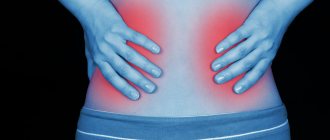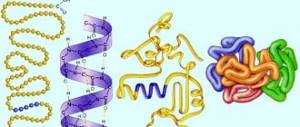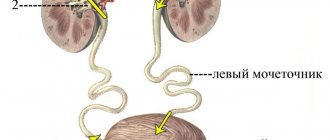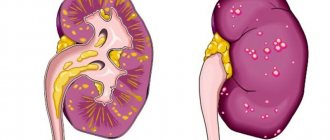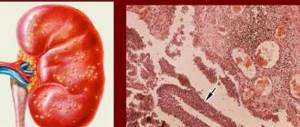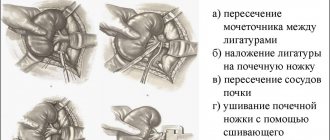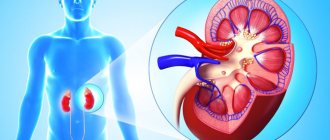There are many causes of inflammation in the kidneys. One of them is the presence of renal stones, which provoke calculous pyelonephritis. This pathology is secondary. It manifests itself as thickening of the mucous membrane of the pelvis, calyces and ureters. Serious complications of calculous pyelonephritis are impaired free flow of urine due to stone blockage and renal failure.
Calculous pyelonephritis
Calculous pyelonephritis is a nonspecific inflammation of the kidneys, sometimes associated with a bacterial or viral infection that develops against the background of urolithiasis. It can occur in acute and non-acute forms; their difference lies in the intensity of the symptoms.
In 60% of cases, young able-bodied people aged 20–25 years are sick with calculous pyelonephritis, 25% of them may become disabled due to complications of the inflammatory process. This disorder is especially dangerous in its chronic form for women of childbearing age, since exacerbation often occurs during pregnancy, and kidney health rapidly deteriorates.
Predisposing factors
There are predisposing factors that increase the likelihood of developing calculous inflammation of the renal structures:
- congenital or acquired disorders in the anatomical structure of the kidneys;
- increased content of oxalates and phosphates in drinking water and soil;
- gout, thyroid dysfunction;
- unstable hormonal levels during adolescence, pregnancy and menopause;
- poor nutrition with excess sugar, organic acids and salt;
- chronic infections in other parts of the body (caries, tonsillitis, abscess);
- frequent surges in blood pressure;
- water imbalance (dehydration, insufficient consumption of clean water).
Stages of calculous pyelonephritis
The disease has three main stages:
- latent;
- aggravated;
- remission.
During the latent stage of calculous pyelonephritis, the patient does not know that there are hard deposits in his kidney that provoke the development of the inflammatory process. There are no symptoms of the disease during this period. Only a differential blood test (counting immune cells, red blood cells and platelets) can indicate the onset of the disorder, since the number of leukocytes increases due to inflammation. At this stage, sand already appears in the urine, so laboratory testing will also help to recognize the pathology in time.
The acute stage of calculous inflammation of the renal structures is characterized by the appearance of obvious symptoms of pyelonephritis, which cause severe discomfort to the patient. During this period, without timely treatment, the patient's condition will begin to deteriorate, increasing the risk of ureteral obstruction (obstruction), renal failure and other complications.
If the therapy was selected correctly and in a timely manner, the patient enters a period of remission. At this time, there are no symptoms of the inflammatory process, but it is too early to talk about a complete cure, since the health of the kidneys is severely undermined by pyelonephritis and it must be restored and maintained with medication to avoid relapse.
Causes of calculous pyelonephritis
The development of calculous pyelonephritis is provoked by urolithiasis:
- phosphate stones in the renal pelvis or ureters;
- oxalate solid deposits;
- urates;
- xanthine crystal formations;
- cystine stones;
- strumina (hard deposits that form during a bacterial infection in the kidneys);
- combined stones.
The exact cause of the inflammatory process can only be found out during laboratory and instrumental diagnostics. Further treatment depends on the type of solid deposits identified, since stones have different chemical properties and unequal ability to dissolve.
Treatment
For small kidney stones and uncomplicated pyelonephritis, which is not accompanied by pain, it is recommended to drink plenty of water and exercise. Based on the size and location of the stone, you can estimate whether it will come out on its own. Pain is eliminated with the help of analgesics - Diclofenac, Ibuprofen or Metamizole. For very severe pain, they can be combined with opioids.
Non-surgical
Treatment is usually divided into two phases. The first is aimed at suppressing symptoms: the administration of non-steroidal anti-inflammatory drugs and possibly antiemetics. The second phase aims to remove stones. Numerous clinical studies have shown the effectiveness of the diet: certain nutritional supplements and, above all, adequate fluid intake are effective as secondary prevention of urolithiasis. A 2009 meta-analysis found that drinking more than two liters of water per day significantly reduced the risk of stone formation in predisposed patients.
Alpha blockers (tamsulosin) and calcium channel antagonists (nifedipine) speed up the clearance of kidney stones. The drugs are effective only for stones measuring from 4 mm to 10 mm. The combination of tamsulosin and a corticosteroid may be better than monotherapy with a single drug. Pharmacotherapeutic methods are a useful adjunct to lithotripsy.
Advice! Pregnant women and small children with a latent course should limit fluid intake (1.5 - 2.5 liters per day) and movement. It is strictly prohibited to take folk remedies without consulting a doctor, as they can lead to unpredictable consequences.
Surgical
Large stones usually need to be removed using invasive or non-invasive methods. Depending on their location and size, they are broken up by shock waves or eliminated. Open intervention is used extremely rarely and for complicated pyelonephritis. Endoscopic surgery is the treatment of choice because it has minimal side effects.
Clinical picture
Symptoms of calculous pyelonephritis do not appear immediately, but upon the onset of the acute stage, when inflammation has spread to large areas of the kidney. The patient begins to experience the following symptoms:
- deterioration of health, weakness, drowsiness;
- increase in body temperature to 38–40 degrees with chills;
- cold sweat, muscle aches, pressing headache;
- nagging or aching pain in the lumbar region, sometimes the discomfort is localized on one side;
- change in the frequency of urination, unpleasant painful sensations in the lower back during them;
- change in the color, transparency and odor of urine, the appearance of sediment and blood discharge;
- renal colic.
With such symptoms, you should immediately contact a therapist or nephrologist. If the patient's condition is serious (temperature 39–40 degrees, severe pain, nausea or vomiting, upset stool), it is necessary to call an ambulance.
Varieties and symptoms
It is customary to distinguish between two fundamental forms of calculous pyelonephritis - acute and chronic.
The first type is characterized by distinct symptomatic manifestations, a rapid course, as well as serous or purulent inflammation of the kidneys. As a result of the progression of the process, the acute form can become chronic. Chronic calculous pyelonephritis does not have severe symptoms, is sluggish and difficult to cure. It may worsen as a result of the formation of new stones and their relocation. The inflammatory process develops due to two pathways: hematogenous and urinogenic mechanisms. In the first option, pathogenic agents are introduced into the kidneys due to their circulation through the bloodstream. The urinogenic mechanism is caused by infectious diseases of the urinary tract. There are three main stages of formation of both acute and chronic types of calculous pyelonephritis:
- The latent or latent period is characterized by minimal symptoms, is not manifested by a feeling of pain and the outflow of urine is not impaired.
- The period of exacerbation is characterized by deterioration of the condition, the symptoms are more pronounced.
- During the remission stage, the outflow of urine is normalized and the general condition of the patient improves.
The entire list of symptomatic manifestations is divided into general and specific. Common signs of the disease include:
- loss of appetite, against this background you can notice a decrease in body weight;
- insomnia;
- lack of performance, drowsiness, weakness, malaise;
- pallor of the skin and mucous membrane; in the acute form, swelling of the facial part is noted.
Specific signs of calculous pyelonephritis are observed mainly during its acute course or exacerbation of the chronic form. The characteristic symptoms in this case are:
- fever, feeling of chills, persistent increase in temperature up to 39 degrees;
- renal colic, which manifests itself in the form of lumbar pain radiating to the groin, thigh, hypochondrium and abdomen;
- there is blood in the urine, this phenomenon is called hematuria;
- difficulty urinating, constant urge.
In addition to the list of symptoms outlined, signs of intoxication of the body may appear in the form of nausea and vomiting. If the disease begins to progress, symptomatic manifestations of chronic renal failure are added, namely unquenchable thirst, increased urine production, and frequent night urges.
Diagnosis of the disease
The diagnostic complex includes two types of examination: laboratory and hardware or instrumental. The first type includes the following:
- analysis of urine and blood composition;
- urine analysis according to Zimnitsky and Nechiporenko;
- biochemistry and differential blood analysis;
- measurement of calcium, phosphate, uric acid concentrations in urine and blood.
Hardware diagnostic methods include x-ray of the kidneys and bladder, intravenous urography, pelvic ultrasound, retrograde pneumopyelography, CT, MRI. The first three often already give a complete picture of the causes of the disease, the localization and strength of inflammation, so the others are used less often.
Prevention of kidney diseases
- timely treatment of common diseases,
- timely and complete treatment of diseases of the genitourinary system,
- regular medical examinations,
- balanced diet,
- drinking clean water in sufficient quantities,
- moderation in caffeine intake,
- rejection of bad habits,
- physical activity.
To prevent pyelonephritis in children, it is important to properly care for the baby from the first days. Urine and feces are a breeding ground for bacteria, so be sure to regularly change diapers, bathe and properly wash and dry your baby - from the front to the tailbone. At an early age, promptly instill in children personal hygiene skills and conduct hardening. It is necessary to explain to teenagers, girls first of all, the peculiarities of puberty, caring for one’s body and intimate hygiene during menstruation. The personal example of parents, trust in the family and a healthy lifestyle will help maintain health.
Source: EtoPochki.ru
